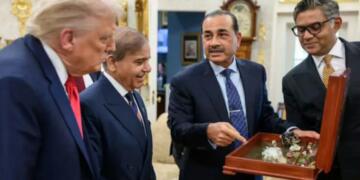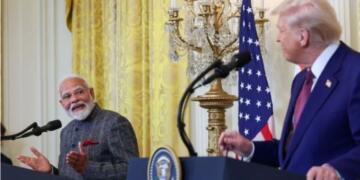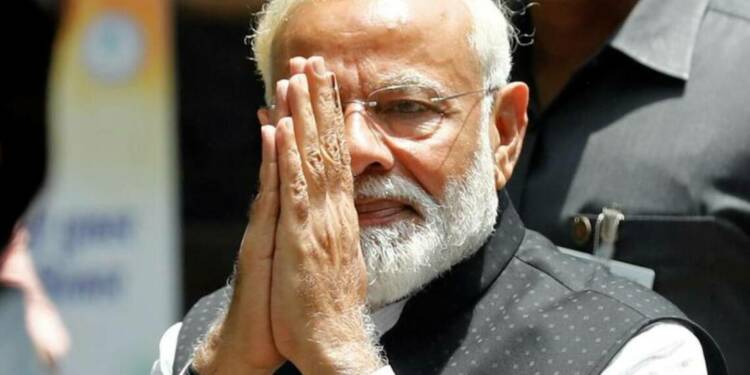After the huge success of the Production Linked Incentive (PLI) scheme in various sectors like – pharmaceuticals, automobiles and auto components, telecom and networking products, advanced chemistry cell batteries, textile, food products, solar modules, white goods, and speciality steel, Modi government is all set to incentivise telecommunication equipment manufacturers with the same.
As per a report by the Indian Express, the Modi government has approved 12,000 crore rupees to incentivise manufacturing of core transmission equipment, 4G/5G next-generation radio access network, and wireless equipment, Internet of Things-access devices, other wireless equipment, switches, routers, etc.
In the next five years, the Modi government will give incentives to various companies for starting indigenous manufacturing of telecommunication equipment in the country. This will not only ensure that India becomes ‘Aatmanirbhar‘ in the manufacturing of telecommunication equipment but will also help the nation end the monopoly of Chinese telecommunication equipment globally.
“The Cabinet has approved PLI for telecom sector…to ensure further progress of Make-in-India in telecom equipment space…5G equipment will also come…so it was important to give incentives,” said Union Telecommunication Minister Ravi Shankar Prasad.
“In the coming five years, we hope to have incremental production of Rs 2.44 lakh crore and export worth Rs 1.95 lakh crore (from this scheme). Direct and indirect employment would be provided to nearly 40,000 people, while tax revenues of up to Rs 17,000 crores would be generated,” he added.
As of today, among the nine major 5G radio hardware and 5G systems for carriers- Altiostar, Cisco Systems, Datang Telecom/Fiberhome, Ericsson, Huawei, Nokia, Qualcomm, Samsung, and ZTE– three are Chinese, three are American, two are European and one is South Korean. No Indian company provides equipment for 4G/5G infrastructure, and therefore, all the telecom majors in India are forced to import telecom infrastructure equipment.
Vodafone and Airtel use telecom infrastructure equipment of Chinese (Huawei and ZTE) and European (Nokia and Ericsson) companies, while Jio has allied with South Korean major Samsung for its 4G infrastructure. Lack of a homegrown telecom infrastructure major means that India gives business worth billions of dollars and thousands of jobs to foreign companies.
With the renewed call for “Make in India” through Aatmanirbhar Bharat, the Modi government is encouraging the domestic players to move into these industries. The industry players are already very enthusiastic about the PLI scheme for the sector.
“We congratulate the government on the recently approved PLI for telecom equipment manufacturing. Initiatives like these will help India position itself as a manufacturing hub of the world. This will open up many opportunities for manufacturers. India will see companies moving their supply chains here and truly become Aatmanirbhar. At the same time, it is also important to take steps towards moving component manufacturing to India,” said George Paul, CEO of industry body Manufacturers’ Association for Information Technology.
The Modi government is not only promoting the domestic manufacturing of telecommunication equipment but is also encouraging the Indian Information Technology behemoths to work towards the virtualisation of telecom infrastructure.
In 2018, Tech Mahindra invested in Altiostar, the American major which develops software for virtualisation of 4G/5G infrastructure through end-to-end web-scale cloud-native networks. India’s telecom giant Bharti Airtel has already deployed Altiostar’s solution in India.
Previously Tech Mahindra said that majority of telecom infrastructure can be virtualised and Indian must lead in the virtualization given its IT prowess. “Both core network and radio network could be virtualized,” said Tech Mahindra CEO C P Gurnani, “While 70% of the component could be virtualized; 30% will still remain in the hardware (to be manufactured by ITI).”
In the last few months, the Chinese telecom equipment suppliers – Huawei and ZTE – have suffered unprecedented damage and were thrown out of many countries. The countries of the world, including the ones which have already awarded the 5G infrastructure rollout the project to Huawei like the United Kingdom and Canada, have closed the doors for the company. The backlash against Huawei comes from the governments (as in the case of the United Kingdom), as well the telecom players themselves, like in Canada where two of the three major telecom companies announced that they would not deal with Huawei in their 5G rollout.
Modi government’s push will thus, not only help India become Aatmanirbhar in the telecom infrastructure but will also help it capture the global market.































